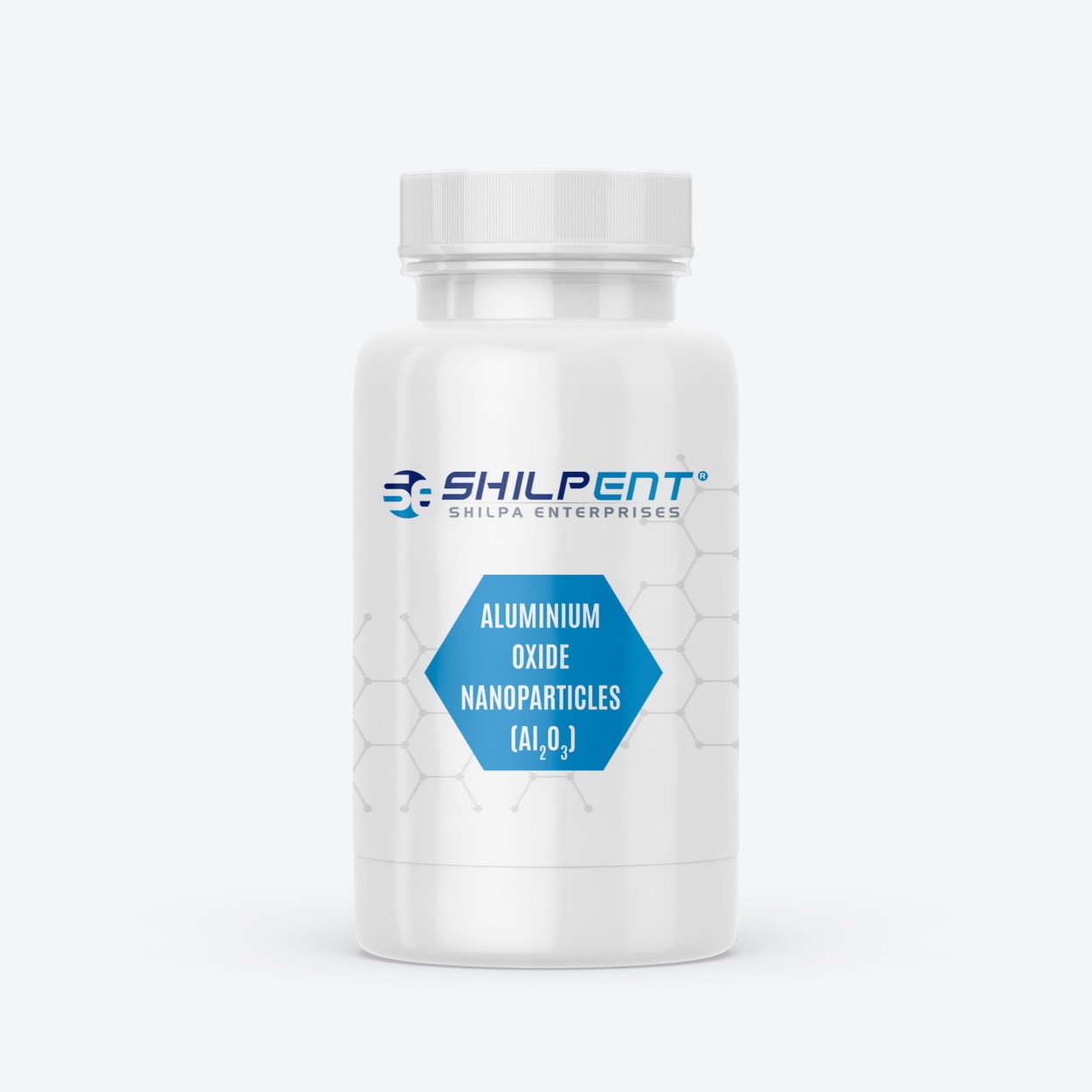
Zinc Oxide Nanoparticles
Description and Specifications of Zinc Oxide Nanoparticles Zinc Oxide Nanoparticles is also known as ZnO nanoparticles or Zinc Oxide Nanopowder. It is tiny particles of Zinc Oxide with diameters...







Aluminum and oxygen atoms combine to form aluminum oxide nanoparticles. It is also referred to as alumina nanoparticles. It belongs to the ceramic nanoparticle class. Due to its unique qualities, it has a wide range of uses. The mineral form of aluminum oxide is called Corundum. It mainly comprises oxygen (O) and aluminum (Al) atoms. Its chemical composition is Al2O3. The average size range of aluminum oxide nanoparticles is in nanometers; hence, it is also known as aluminum oxide nanopowder.
Aluminum oxide nanoparticles can exist in several phases. It has a crystalline structure at room temperature. The alpha, gamma, and theta phases are the most dominant phases. It has a very high melting point (over 2,000 degrees Celsius). Aluminum oxide nanopowder is an excellent conductor of heat. It is used in applications that require high temperatures.
Al2O3 is chemically inert and resistant to many extreme situations. It is used in many industrial and chemical applications. Due to its hardness, it is used for wear and scratching-resistant coating.
It is used in semiconductors and electronic devices because it is an electrical insulator. It is also compatible with biomedical substances. It can be synthesized using various methods, including sol-gel, precipitation, hydrothermal synthesis, and vapor phase techniques.
High Surface Area: Because nanoparticles are so tiny, they have a lot of surface area per unit volume, which boosts reactivity and multiplies the number of active sites that are open to chemical reactions.
Hardens and strengthens other materials: The mechanical qualities of the material to which this nanopowder is added improve significantly. It becomes harder, gets more strength, and becomes resistant to wear and tear.
Good Conductor of Heat: Aluminum oxide nanoparticles is perfect for high-temperature applications because of their thermal properties.
Electrical insulation: Nano alumina is an excellent electrical insulator and is used in a variety of electrical and electronic applications.
Special Surface Characteristics: Because of its unique surface characteristics, Al2O3 can serve as catalysts or supports for different chemical processes.
Optical properties: Nano alumina shows interesting optical properties, so it is used in optics and photonics applications.
This product is used in different industries for many purposes. It is applied in the petrochemical and pharmaceutical sectors. It helps speed up chemical reactions and makes industrial processes more efficient. It is also mixed with other materials to create better, stronger products used in buildings and structures. It is used to polish and grind rough materials and added in coatings to make them tougher, scratch-resistant, and withstand wear and tear.
In electronics, these nanoparticles act as insulators in capacitors and other devices. It creates unique layers in electronic devices, helping them work better at very small scales, like in nanoelectronics.
The Al2O3 is used in advanced ceramics. It makes the ceramics stronger and better at handling the heat. In the medical field, it improves medical imaging and helps with tissue engineering. Overall, aluminum oxide nanopowder is versatile and finds use in many different industries and technologies to improve performance and efficiency.
Shilpent.com has been a valued manufacturer and supplier of high-quality nanoparticles, nanomaterials, and other products based on nanotechnology for over ten years. We follow strict quality control criteria and maintain fair prices.
If clients have unique requirements for research or application, we offer customization options like specialized particle sizes or surface alterations. We provide technical support and advice to help our clients choose the best project materials.
We aim to focus on low pricing and make aluminum oxide nanoparticles more accessible to companies and researchers. We take pride in delivering goods quickly and building strong client relationships. We ship all across the globe. Call us to get the best deal.
6 other products in the same category:
Description and Specifications of Zinc Oxide Nanoparticles Zinc Oxide Nanoparticles is also known as ZnO nanoparticles or Zinc Oxide Nanopowder. It is tiny particles of Zinc Oxide with diameters...
Details and Specifications of Iron Oxide Nanoparticles Iron Oxide Nanoparticle, or IONPs, is tiny particles of iron oxide. Iron Oxide Nanoparticles is so small that it cannot be seen without a...
Details and Specifications of Magnesium Oxide Nanoparticles Magnesium Oxide Nanoparticles (MgO) is a chemical compound of magnesium and oxygen atoms. They are incredibly tiny particles. These...
Details and Specifications of Titanium Dioxide Nanoparticles Titanium Dioxide Nanoparticles (TiO2 NPs) is incredibly tiny particles with a size of under 100 nanometers. It is a naturally occurring...
Description and Specifications of Silicon Dioxide Nanoparticles Silicon Dioxide Nanoparticles, or silica nanoparticles, is super-small structures made from silicon and oxygen atoms. It is much...
Details and Features Copper Oxide Nanoparticles Copper Oxide Nanoparticles (CuO) is a tiny copper oxide particle also known as Copper Oxide Nanopowder. It is round and has a lot of surface area....